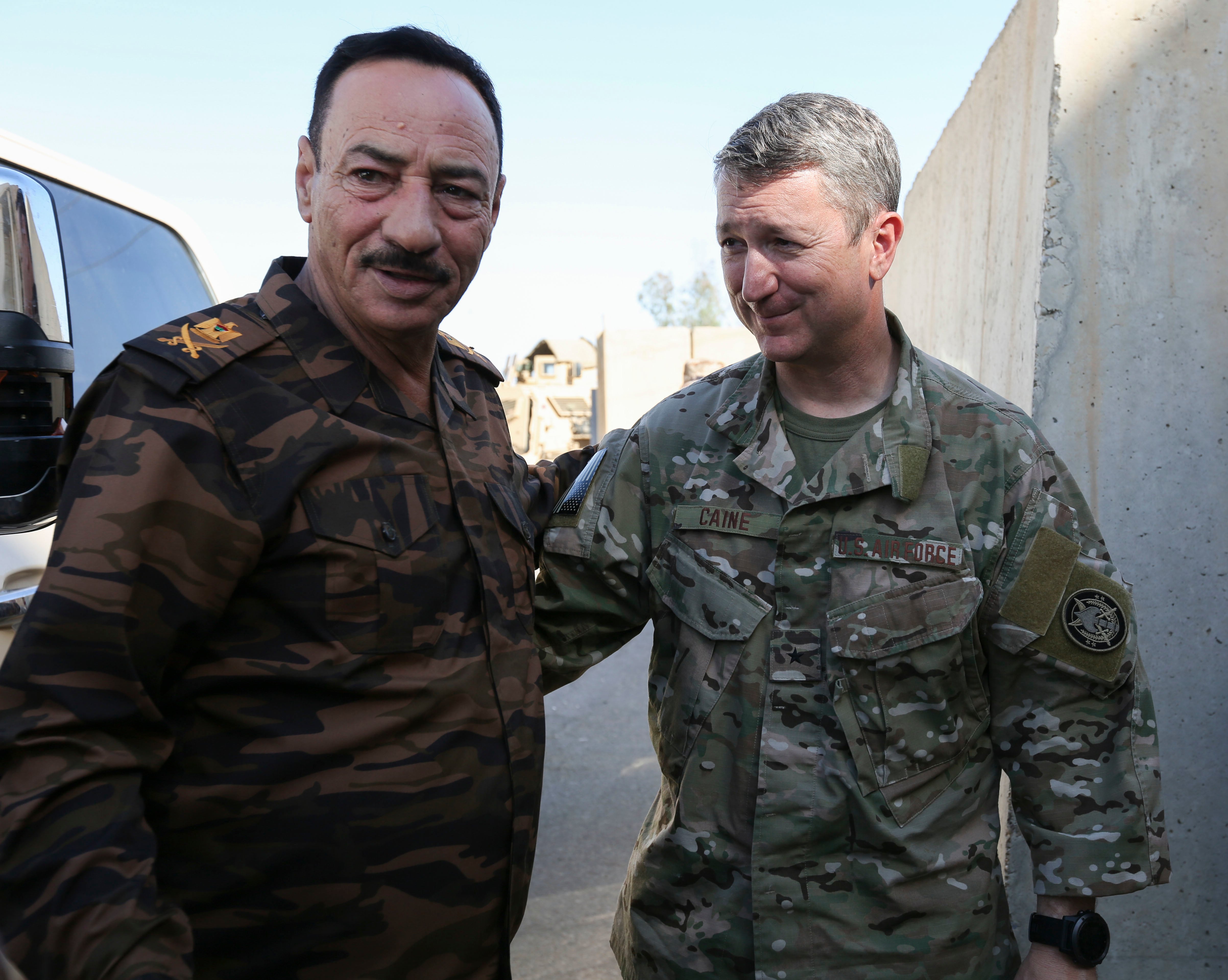WASHINGTON — The top F-35 program official is not satisfied with the pace of ongoing negotiations with Lockheed Martin for the 11th batch of joint strike fighters, but the government is far from having to consider imposing a unilateral contract agreement, the program head said Wednesday.
Vice Adm. Mat Winter, the program executive officer of the F-35 Joint Program Office, had initially wanted to seal a deal for more than 130 Lot 11 jets by October — a lofty goal, considering it had taken his predecessor more than a year to get a 10th batch of jets on contract.
He missed both that target as well as his slightly more modest objective of finalizing a contract by the end of 2017.
Both Lockheed and the JPO continue to negotiate in good faith and are making progress, Winter told reporters during a roundtable Wednesday. However, he is not happy with what he sees as Lockheed’s lack of effort.
“They could be much more cooperative and more collaborative, and we could seal this deal faster. We could. They choose not to, and that’s a negotiating tactic,” he said.
Winter would not elaborate on when the JPO would consider setting a unilateral contract, calling it “an endgame tactic that is the last resort. We are nowhere near that.”
It is incredibly rare for the government to impose a unilateral contract agreement, or UCA — a one-sided deal that forces a contractor to abide by terms set by the government.
In fact, the practice was all but unheard of until the JPO forced Lockheed into a $6.1 billion contract for the ninth lot of F-35s in November 2016.
The program office felt Lot 9 negotiations had completely stagnated, and the unilateral contract was its only remaining option. Then, after President Donald Trump criticized the program and inserted himself into negotiations, Lockheed cut its losses and decided not to pursue legal action against the Defense Department for the UCA. Trump’s influence arguably helped accelerate a deal for Lot 10 jets toward the finish line, though the program office had already put in more than a year’s work at the negotiating table.
Historically, two of the major difficulties that has slowed down F-35 negotiations is figuring out how much each F-35 should cost, as well as the fee paid to Lockheed.
In the Lot 10 contract, an “A” model dropped in cost from more than $100 million to $94.6 million. That sum includes the price of the air vehicle, engine and Lockheed’s fee, Winter explained. The price per unit of an F-35 dropped, on average, by 7.5 percent — just a little ahead of the JPO’s goal of a 6-7 percent reduction.
Winter said Wednesday he expects all variants of the F-35 to be cheaper in Lot 11 than in the previous batch. However, he would not put forward a similar cost goal for Lot 11, arguing that it could diminish his chances of having an advantageous starting point for future batches.
“If I give you a number and it gets printed, Lockheed Martin has a target. I’m negotiating for the best deal,” he said.
Perhaps surprisingly, Lockheed officials have acknowledged the difficulties in working through a deal for Lot 11. During the Singapore Airshow earlier this month, Orlando Carvalho, the company’s head of its aeronautics business, said he hopes to settle a contract “in the near future” but couldn’t give a time frame for when he expected to reach an agreement with the JPO.
“Because of the quantity of planes, the value of what we’re discussing, given the size and everything like that, it does take time. So we’re in that process,” he said. “We still have a bit of work ahead of us.”
Carvalho acknowledged a unilateral contract could be an option if negotiations fall apart, but said he also recognized “with high confidence that it is not their desire to do that.”
Since contract negotiations seem to be dragging on, isn’t it time for the president to get involved, as he did on the 10th lot of F-35s?
Winter, who was asked that question, seemed to think that was unnecessary. The program office has its best negotiator sitting down at the table with Lockheed, and she’s doing “phenomenal work,” he said.
“She’s in the NAVAIR 2.0 contracting competency. First name’s Julie. She’s great,” he said. “She will stare down anybody. More importantly, she comes prepared with facts.”
Valerie Insinna is Defense News' air warfare reporter. She previously worked the Navy/congressional beats for Defense Daily, which followed almost three years as a staff writer for National Defense Magazine. Prior to that, she worked as an editorial assistant for the Tokyo Shimbun’s Washington bureau.




